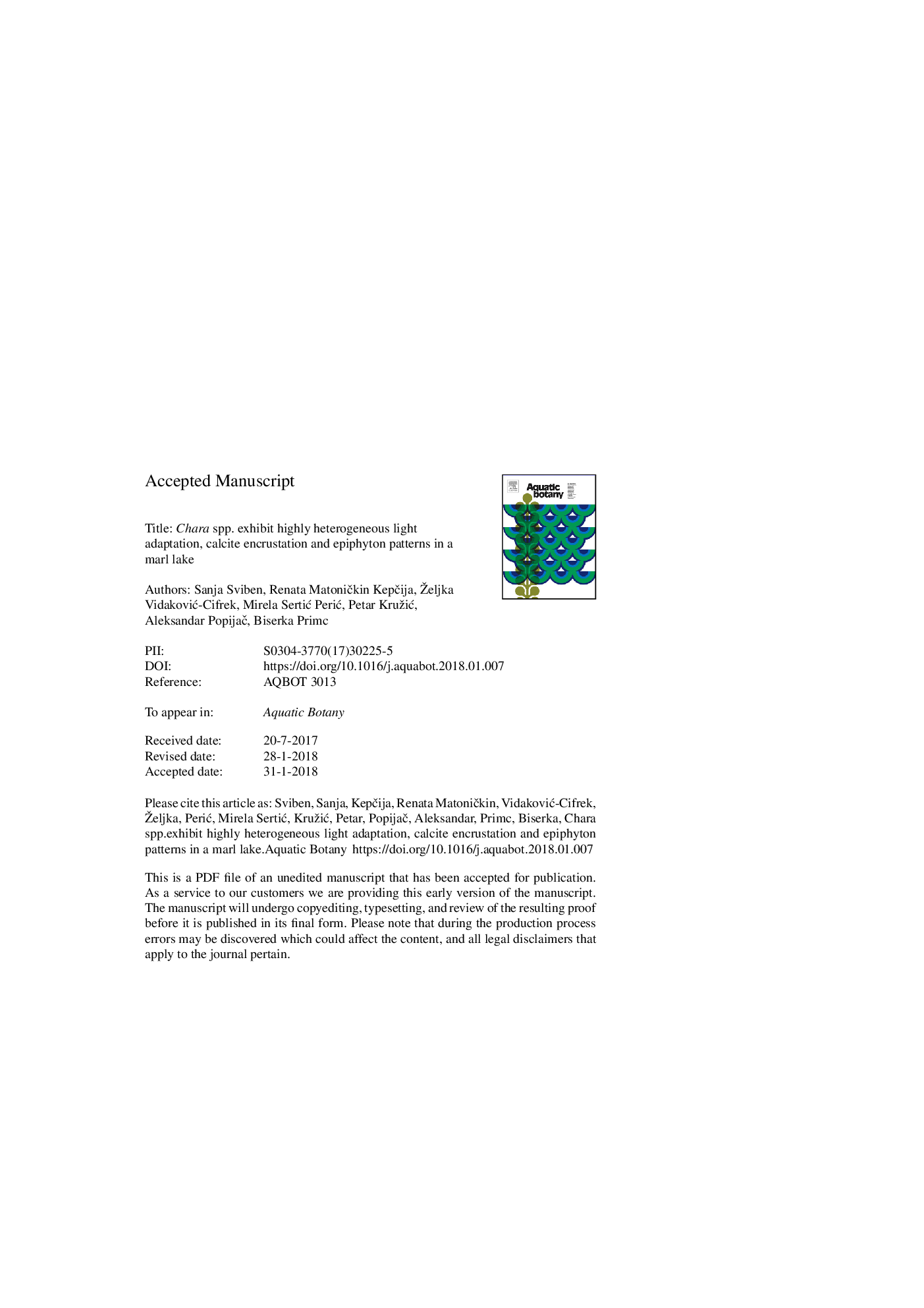| Article ID | Journal | Published Year | Pages | File Type |
|---|---|---|---|---|
| 8883566 | Aquatic Botany | 2018 | 31 Pages |
Abstract
The aim of this work was to determine the relationships between calcite encrustation, photosynthetic pigments and the epiphyton community of upper and lower thallus parts of Chara spp. from different depths of a marl lake (Lake ProÅ¡Äe, NP Plitvice Lakes, Croatia). Samples were taken from two Chara species, spread across three lake depths (Chara subspinosa at 1 and 5â¯m, and Chara globularis at 10â¯m), and analysed spectrophotometrically for photosynthetic pigment (chlorophyll a, chlorophyll b and total carotenoids) composition, and gravimetrically for organic matter and calcite encrustation contents within the macroalgal species. Epiphytic (i.e., epialgal) protozoa and micro-metazoa were determined on live material. The amounts of calcite deposits on Chara were two times higher at the depths of 1 and 5â¯m, compared to 10â¯m - most likely due to water chemistry (i.e., pH, temperature and calcium concentrations), light availability and photosynthesis patterns as well as Chara species morphology differences. Photosynthetic pigments exhibited complex patterns, differing both between upper and lower charophyte thallus parts, and among depths, likely reflecting adaptations of the macroalgae and epiphytes to light conditions. Protozoans and micro-metazoans exhibited various assemblages at different depths, with C. subspinosa supporting highest diversity (42 taxa at 5â¯m) and C. globularis exhibiting highest abundance (up to 9000 ind/gDW). Peritrich ciliates and rotifers preferred Chara thalli with less extensive calcite encrustations and more complex structure.
Keywords
Related Topics
Life Sciences
Agricultural and Biological Sciences
Aquatic Science
Authors
Sanja Sviben, Renata MatoniÄkin KepÄija, Željka VidakoviÄ-Cifrek, Mirela SertiÄ PeriÄ, Petar KružiÄ, Aleksandar PopijaÄ, Biserka Primc,
